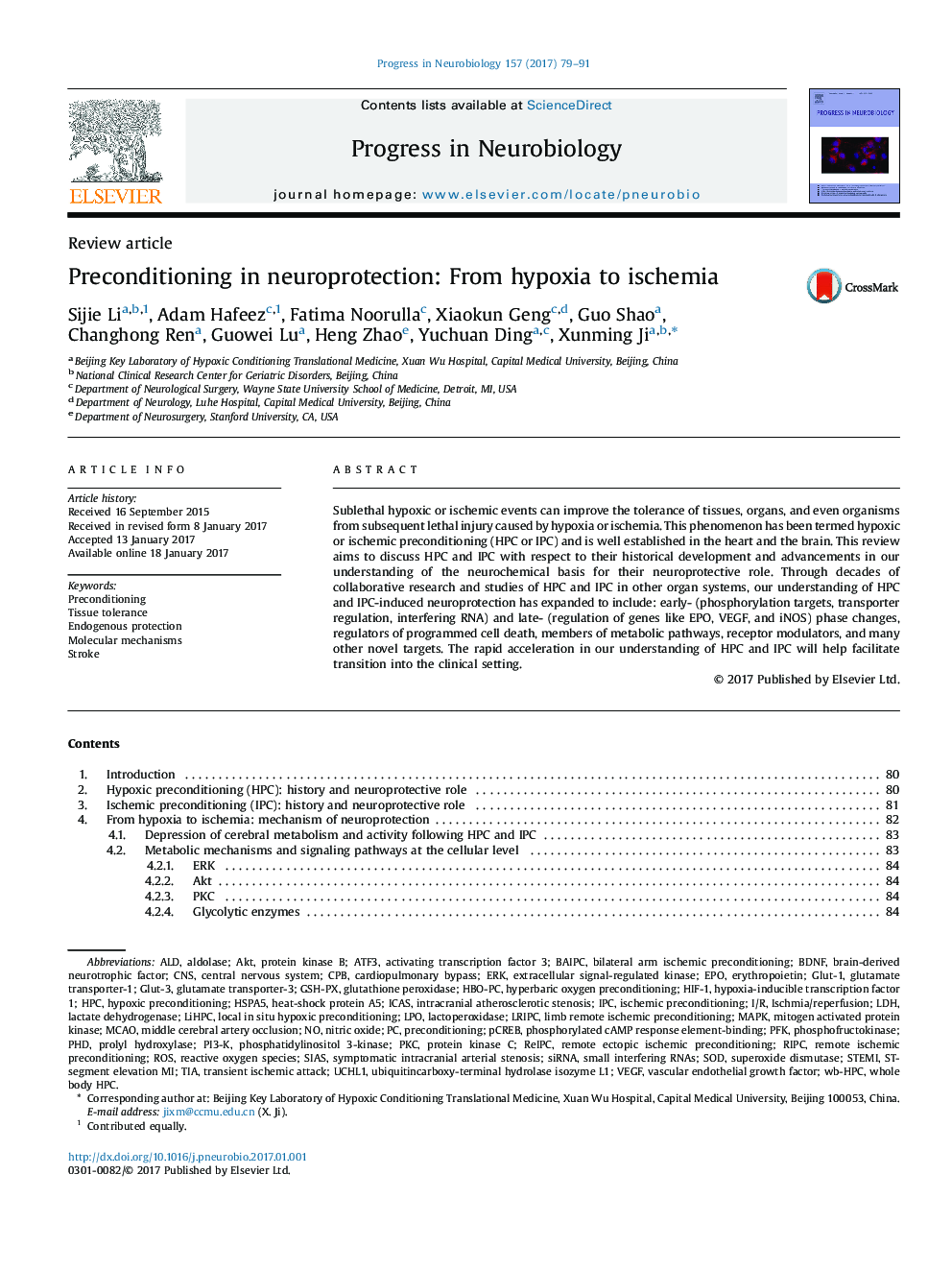| Article ID | Journal | Published Year | Pages | File Type |
|---|---|---|---|---|
| 5739066 | Progress in Neurobiology | 2017 | 13 Pages |
â¢Sublethal hypoxic or ischemic events induce tolerance in tissues, organs, and organisms against subsequent lethal hypoxia or ischemia.â¢This hypoxic or ischemic preconditioning (HPC or IPC) and its protective effects have been well established in diseases of the heart and brain.â¢HPC and IPC have a multitude of beneficial regulating effects on cerebral metabolism and energy demand, and mitochondrial function.â¢HPC and IPC have effects on neurotransmitters, cellular signaling, and anti- and pro-apoptotic proteins.â¢The continuing rapid acceleration in our understanding of HPC and IPC promises to facilitate a smooth translation into the clinical setting.
Sublethal hypoxic or ischemic events can improve the tolerance of tissues, organs, and even organisms from subsequent lethal injury caused by hypoxia or ischemia. This phenomenon has been termed hypoxic or ischemic preconditioning (HPC or IPC) and is well established in the heart and the brain. This review aims to discuss HPC and IPC with respect to their historical development and advancements in our understanding of the neurochemical basis for their neuroprotective role. Through decades of collaborative research and studies of HPC and IPC in other organ systems, our understanding of HPC and IPC-induced neuroprotection has expanded to include: early- (phosphorylation targets, transporter regulation, interfering RNA) and late- (regulation of genes like EPO, VEGF, and iNOS) phase changes, regulators of programmed cell death, members of metabolic pathways, receptor modulators, and many other novel targets. The rapid acceleration in our understanding of HPC and IPC will help facilitate transition into the clinical setting.
